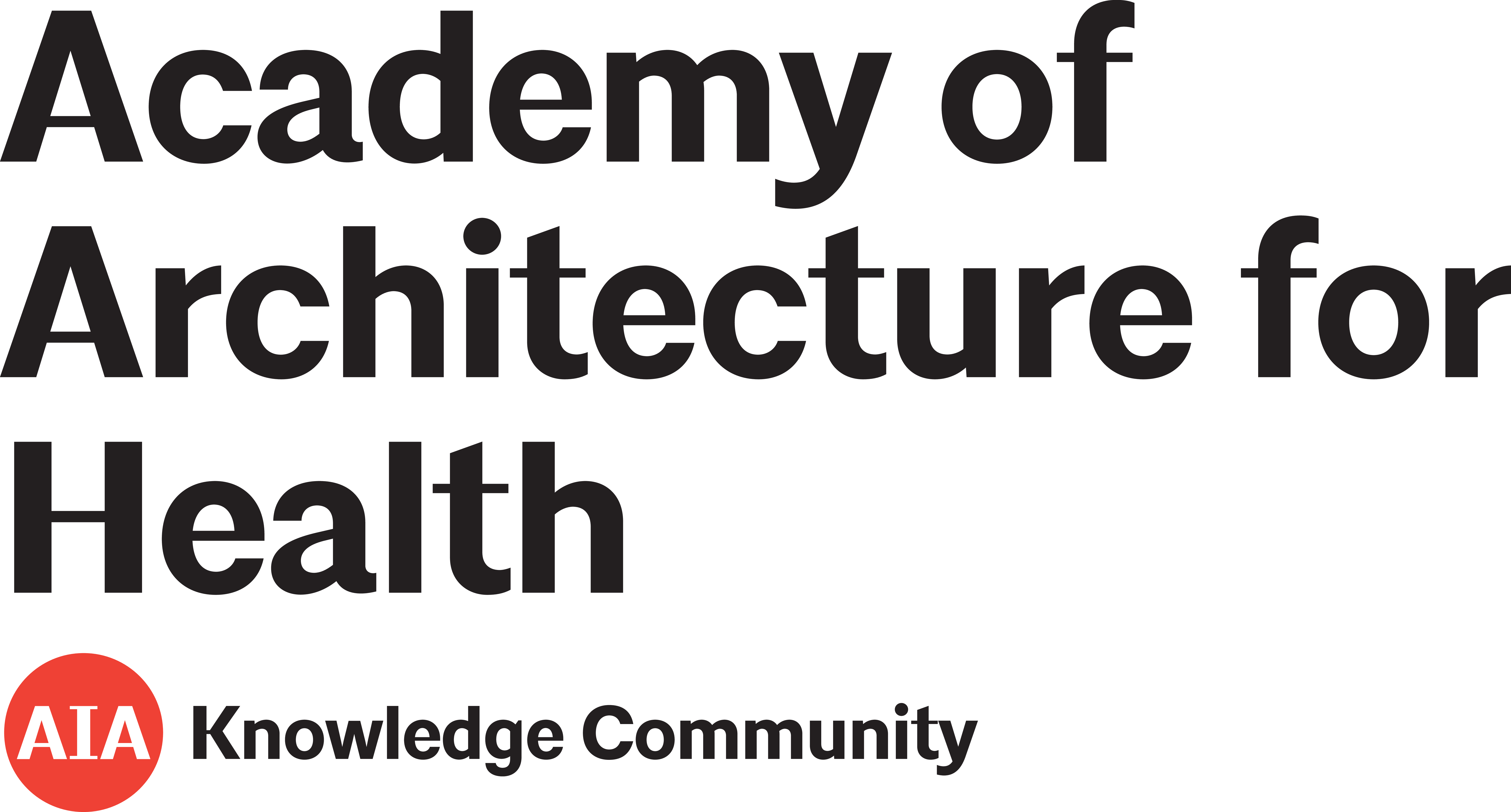Nursing unit design and communication patterns: What is “real” work?
2007
HERD: Health Environments Research & Design Journal
Journal Article
Issue 1
Volume 1
Pages 58-62
Author(s): Becker, F.
With billions of dollars spent each year on new hospital construction and an ever-growing shortage of nurses, more attention is being paid to the way in which design of new facilities and, more specifically, nursing units might better support nurse recruitment, their work process, and retention. There is growing concern about the quality of hospital environments and the impact on staff, which inherently impacts quality of care.
Added September 2014
Exploring the Impact of the Physical Environment on Patient Outcomes in Ambulatory Care Settings
2009
HERD: Health Environments Research & Design Journal
Journal Article
Issue 2
Volume 2
Pages 21-41
Author(s): Gulwadi, G., Joseph, A., Keller, A.
Recent trends in healthcare have seen a shift in treating episodic care within acute care environments to ambulatory care centers (ACCs). These facilities distribute care based upon prevention and wellness to combat chronic disease and provide care management. Ambulatory care environments consist of a broad platform of care settings and deliver many types of care to a wide range of populations. Due to these and other complexities, research linking the impact of the physical design of ACCs on patient health outcomes has yet to be documented.
Added September 2014
Applying human factors in improving medication-use safety
2002
American Journal of Health-System Pharmacy
Journal Article
Issue 12
Volume 59
Pages 1155-1159
Author(s): Schneider,PJ.
In this descriptive study the author summarizes the highlights of an interactive conference on human factors (HF) and t applications to improve medication safety. The author describes the various human factors concepts and tools and their applications in reducing human errors, thus improving medication safety.
Added May 2014
Centralized vs. Decentralized Nursing Stations: Effects on Nurses’ Functional Use of Space and Work Environment
2010
Health Environments Research and Design Journal (HERD)
Journal Article
Issue 4
Volume 3
Pages 19-42
Author(s): Zborowsky, T., Bunker Hellmich, L., Morelli, A., O’Neill, M.
Information technology enables nurses to move away from traditional centralized paper-charting stations to smaller decentralized work stations and charting substations located closer to, or inside of, patient rooms. Understanding the tradeoffs presented by centralized and decentralized nursing station design could provide useful information for future design and the nurse environment "fit."
Added May 2014
Effects of Acuity-Adaptable Rooms on Flow of Patients and Delivery of Care
2004
American Journal of Critical Care
Journal Article
Author(s): Hendrich, A. L., Fay, J., Sorrells, A.
Acuity-adaptable rooms could reduce patient transfer times, decrease costs, and increase patient quality of care and satisfaction. Researchers conducted a pre/post study in an acute care setting to evaluate the impact of moving to acuity-adaptable rooms on patient flow, hospital capacity, patient and staff satisfaction, sentinel events, average length of stay, and nursing productivity.
Added May 2014
Intra-unit patient transports: time, motion, and cost impact on hospital efficiency
2005
Nursing Economic$
Journal Article
Issue 4
Volume 23
Pages 157-164
Author(s): Hendrich, A. L., Lee, N.
Transferring patients can be stressful and confusing for patients and their families. In addition, risks to the patient increase during transfers. Thus, many healthcare facilities are trying to reduce patient transfers by providing more flexible patient rooms.
Added May 2014
Lean Thinking in Emergency Departments: A Critical Review
2011
Annals of Emergency Medicine
Journal Article
Issue 3
Volume 57
Pages 265-278
Author(s): Holden, R. J.
Added May 2014
A novel night lighting system for postural control and stability in seniors
2008
Lighting Research and Technology
Journal Article
Issue 2
Volume 40
Pages 111-126
Author(s): Figueiro, M. G., Gras, L., Qi, R., Rizzo, P., Rea, M., Rea, M. S.
Age-related changes may result in impaired balance control, and thus can lead to increase risk of falls among the elderly. Visual information provides a spatial reference for self-position and location of obstacles within a person’s environment. Lack of this information results in increased body sway. In addition, low ambient light levels reduce postural control. Therefore, this study investigated the effectiveness of a novel self-luminous light emitting diode (LED) night-lighting system that provided linear spatial orientation cues plus low ambient lighting for enhancing postural control in healthy seniors.
Added April 2014
Enhancing the traditional hospital design process: a focus on patient safety
March 2004
The Joint Commission Journal on Quality and Safety
Journal Article
Issue 3
Volume 30
Pages 115-24
Author(s): Reiling, J.G., Knutzen, B.L., Wallen, T.K., McCullough, S. , Miller, R., Chernos, S.
The current study is an overview of innovative system engineering and patient safety factors, named as the Synergy model that a hospital system utilized to design their new facility.
Added April 2014
Environmental evaluation for workplace violence in healthcare and social services
2008
Journal of Safety Research
Journal Article
Issue 2
Volume 39
Pages 237-50
Author(s): McPhaul, K.M. , Murrett, K., Flannery, K. , Rosen, J., Lipscomb, J., London, M.
The purpose of this project was to contribute specific, evidence–based guidance to the healthcare and social services employer communities regarding the use of environmental design to prevent violence.
Added April 2014
Noise levels in Johns Hopkins Hospital
2005
Journal of the Acoustical Society of America
Journal Article
Issue 6
Volume 118
Pages 3629-3645
Author(s): Busch-Vishniac, I. J., West, J. E., Bamhill, C., Hunter, T., Orellana, D., Chivukula, R.
Patients, visitors, and staff often complain about the amount of noise in hospital settings. However, in addition to being annoying and disrupting sleep, some research suggests that high sound levels negatively affect the speed of wound healing and the number of medications, as well as contributing to staff stress and burnout.
Added April 2014
Noise Levels in an Urban Hospital and Workers' Subjective Responses
1995
Archives of Environmental Health
Journal Article
Issue 3
Volume 50
Pages 247-251
Author(s): Bayo, M. V., Garcia, A. M., Armando, G.
Noise has become a major environmental problem as well as a public health concern, resulting in a wide range of negative consequences. Despite healthcare facilities’ attempts to foster favorable environments to assist in patient recovery and staff working conditions, noise levels are often higher than desirable in and around hospitals. There is a need to identify the main noisy areas and noise sources and evaluate the hospital staff’s reactions to noise.
Added April 2014
Using a Task Analysis to Describe Nursing Work in Acute Care Patient Environments
2009
Journal of Nursing Administration
Journal Article
Issue 12
Volume 39
Pages 537-547
Author(s): Battisto, D., Pak, R., Vander Wood, M. A., Pilcher, J. J.
A growing body of research demonstrates linkages between workplace design and processes in healthcare facilities with staff and patient safety, operational efficiency, staff satisfaction, and medical errors. There has been less emphasis on the role of the built environment in helping or hindering care delivery. Research is needed on the contextualized activities performed by nurses and how nurses spend their time to measure the effects of interventions aimed at redesigning care to improve safety or efficiency or to understand the implications of policy changes for nursing practice.
Added April 2014
Health Care Wayfinding Integrates Four Aspects to Become Carefinding
2010
American Society for Healthcare Engineering
Monograph
Author(s): Cooper, R.
Carefinding is a term that refers to an evidence-based approach to designing wayfinding systems in healthcare settings, catering to the needs of the users of those spaces, particularly patients and their caregivers. Successful wayfinding in healthcare facilities requires consideration of the user experience, the wayfinding process, the wayfinding plan, and implementation of the plan.
Added March 2014
Acuity-Adaptable Patient Room Improves Length of Stay and Cost of Patients Undergoing Renal Transplant: A Pilot Study
2013
Critical Care Nursing Quarterly
Journal Article
Issue 2
Volume 36
Pages 181-194
Author(s): Bonuel, N., Degracia, A., Cesario, S.
As patient room design has evolved to accommodate changes in clinical services, operational trends, and new technologies, the acuity-adaptable patient room concept has emerged. In an acuity-adaptable room, patients are cared for across the continuum, from intake to discharge regardless of their progress or condition. This is a departure from the current standard care delivery, where patients move from unit to unit and room to room depending on the level of care acuity.
Added March 2014
Experiences of the transplant nurses caring for renal transplant Patients in an acuity-adaptable patient room
2013
Critical Care Nursing Quarterly
Journal Article
Issue 2
Volume 36
Pages 195-212
Author(s): Bonuel, N., Cesario, S. K.
One benefit of acuity-adaptable patient rooms may be increased job satisfaction for nurses. Further, making nurses happier at their jobs could keep them in the workforce longer. This article examines this patient care model from the perspective of renal transplant nurses.
Added March 2014
Threading Needles in the Dark: The Effect of the Physical Work Environment on Nursing Practice
2009
Critical Care Nursing Quarterly
Journal Article
Issue 1
Volume 32
Pages 70–74
Author(s): Simmons, D., Graves, K., Flynn, E. A.
People’s ability to perform reliably and safely relies on the physical work environment. Nowhere is this connection more critical than in healthcare environments, which can be noisy, dimly lit, and chaotic. The United States Pharmacopeia addresses this issue in its draft general chapter of standards, “Physical Environments that Promote Safe Medication Use,” which specifies work environment guidelines to support efficient and safe medication use.
Added February 2014
The impact of health facilities on healthcare workers’ well-being and performance
2009
International Journal of Nursing Studies
Journal Article
Issue 7
Volume 46
Pages 1025–1034
Author(s): Rechel, B., Buchan, J., McKee, M.
There is extensive research on the effect of healthcare environments on patients. But much less is known about health facilities’ impact the staff, even while there is growing recognition of the need for healthy working environments. Poor healthcare working environments can relate to the nature of the work—long and antisocial hours, little administrative support, physical labor, and, sometimes, violence.
Added February 2014
Unpleasant and pleasant memories of intensive care in adult mechanically ventilated patients—Findings from 250 interviews
2011
Intensive and Critical Care Nursing
Journal Article
Issue 2
Volume 27
Pages 76-84
Author(s): Samuelson, K. A. M.
Patients’ perspectives on the intensive care experience are essential to improve patients’ comfort and well-being during and after a stay in the intensive care unit (ICU). This research approach was unique as the author used data from a large number of patient interviews (n = 250) and a validated qualitative content analysis technique to create themes from the data. One of the themes included—environmental distress—described aspects of the physical environment that patients remembered as causing distress.
Added January 2014
Practice Environments of Nurses in Ambulatory Oncology Settings: A Thematic Analysis
2012
Cancer Nursing
Journal Article
Issue 1
Volume 35
Pages E1-E7
Author(s): Kamimura, A., Schneider, K., Lee, C. S., Crawford, S. D., Friese, C. R.
The working environments for nurses in inpatient settings have been studied extensively, but little is known about ambulatory locations. Yet, according to National Center for Health Statistics, 19 million of the 23 million annual visits for chemotherapy occur in ambulatory centers. Therefore, research in this area could contribute to better nursing outcomes and patient care.
Added January 2014




